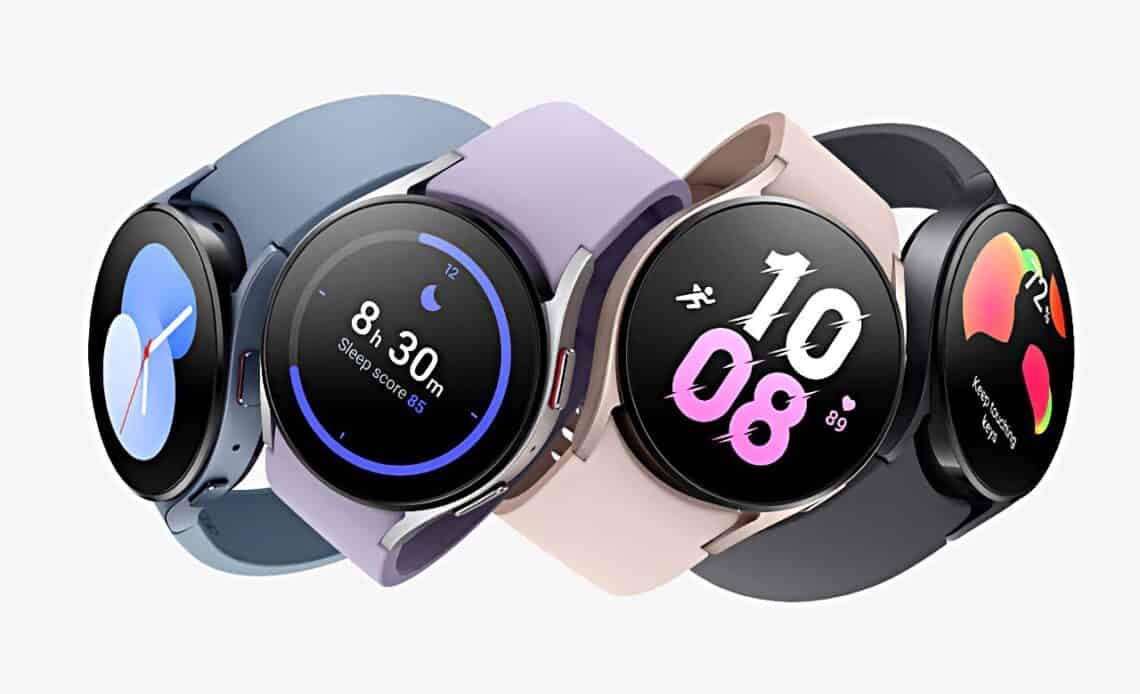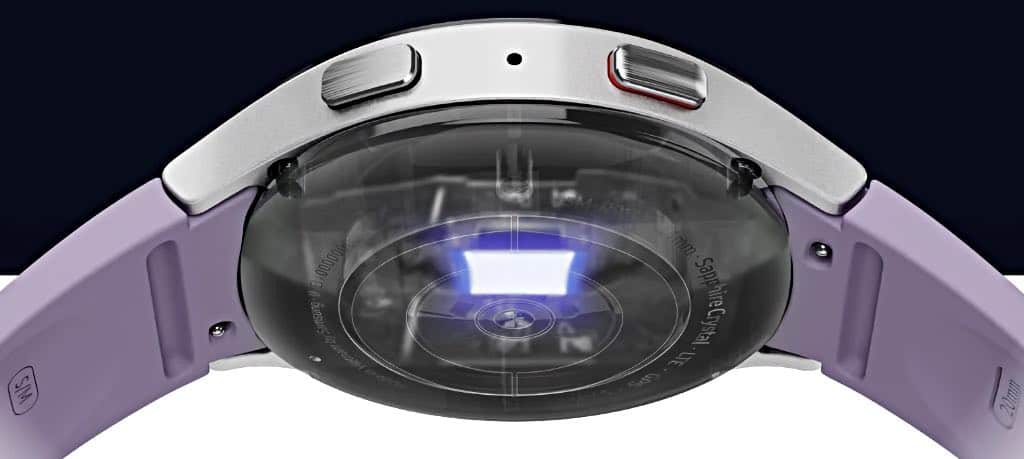
Above: Samsung’s new Galaxy Watch 5. Image courtesy Samsung.
BitDepth#1380 for November 14, 2022
There’s a lot to like in Samsung’s Galaxy Watch 5. The screen provides a generous canvas for sprinkling all kinds of triggers and indicators, though it might be too big for the smaller wrist (I’m testing the 44mm model, there is a 40mm version).
That’s particularly useful because Samsung’s new smartwatch runs Google’s Android-based WearOS for wearables operating system. The company ditched the Linux-based Tizen OS last year.
Tizen always felt like a lot of work with spotty results in the early Gear models.
The very first Gear Fit I tested back in 2014 ran a non-upgradeable runtime operating system.
That wearable’s limited support for immersion made it a dubious choice for serious fitness engagement.
The second smartwatch I tested was Huawei’s Fit, which was a timekeeper designed for serious activity. It was also unequivocally submersible.
Despite the design limitations of the Tizen operating system, it is an effective swim tracker that works well in a pool.
To test the Galaxy Watch 5, I charged it and put it on. Except for recharges (which take roughly 50 minutes on a custom inductive charger), I’ve had it on my wrist for the last two weeks.
Battery life is fair for a device that runs this many sensors continuously, falling just short of two days on a full charge.
A power-saving mode extends that by roughly eight hours, but you give up some features (raising your hand doesn’t turn it on) and performance takes a slight hit.
Expect to waste a couple of hours browsing and trying watch faces on the device. Once the Watch 5 is paired with a smartphone, watch faces can be more easily chosen and customised on the Galaxy Wearable phone app.
There’s a staggering selection available, from pretend Rolex faces (bleh) to almost unreadably complicated wrist dashboards gathering and displaying an intimidating profile of information.
It’s no surprise to realise that the zones on a watch face available for different triggers and controls are actually called complications.
I configured and used three different watch faces before settling on one. Some faces are actually sophisticated apps that ride on top of the Wear OS and add even more customisation features to the display but cost a bit.
Why would you possibly want to see all this information?
Because a smartwatch tells time as a side hustle.
Smartwatch owners now have a range of monitors that passively monitor your health and can be set to actively track exercise activities.
The Watch 5 can do other nifty things, including answer calls (tinny and fussy to work with, not the Dick Tracy fantasy we all wanted), trigger the smartphone’s camera remotely and record audio (fair quality), but the real value proposition is what the watch does continuously while you wear it, tracking your heart rate, steps and your sleep cycles.
Viewing all this on the tiny screen isn’t terribly revealing, but the data, after synchronisation with the Samsung Health app on your Android phone, offers a lot of insight in return for just wearing the watch.
All this connectivity with smartphones and the wider world is enabled by both Bluetooth and WiFi radios which establish fluent connections with a paired smartphone, swapping information back and forth between the larger screen of your mobile device and the view on your wrist.
But is the Watch 5 suitable for swimming?
Samsung is coy about it on its website. The smartwatch is IP68 rated, which is resistance to a depth of 1.5 metres for 30 minutes. The Watch 5 is also rated as water resistant to a depth of five atmospheres, roughly 50 metres down.
These are the same specifications of the now discontinued Gear Sport and Galaxy Wear Active watches which were explicitly marketed to swimmers.
Samsung now lists just four smartwatches for sale, the Galaxy Watch 5 and Watch 5 Pro, last year’s Watch 4 and Watch 4 Classic. Recent older models will receive software updates.
There’s a swimming routine listed in the exercises you can track on the watch and activating it also turns on “Water Lock,” a subroutine which turns off touch sensitivity on the screen.
When this mode is turned off, the speakers play a deep sound that’s meant to clear out any residual water from the watch.
The Watch 5 is capable of tracking activity during aqua aerobics, canoeing, water skiing, yachting and wind surfing which are all pretty aggressive water activities, so it’s hard to tease apart what’s a preset in Wear OS and what Samsung supports as intended use.
It’s probably not a good idea to wear it if you’re going to be floating about sipping margaritas with your arms in the water for hours, but it seems that lap swimming is supported. Sort of. We’ll see.





